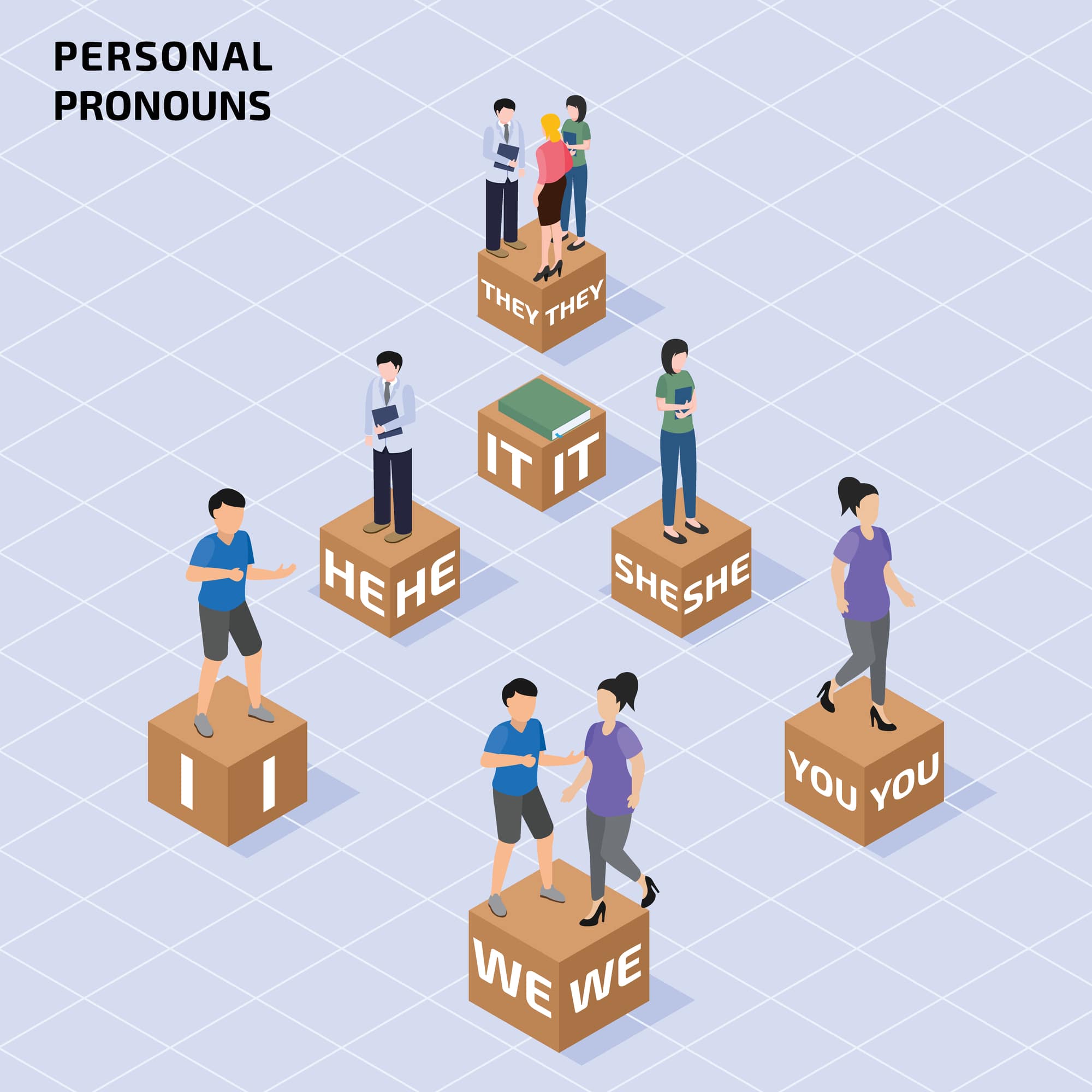We'll be back in a bit !
The system is currently undergoing a routine upgrade to ensure you get the best learning experience. The maintenance is expected to continue till 8:00 pm. Please check back later.
Thank you for your understanding!

When it comes to appropriately using nouns, pronouns are the most crucial tool available to English grammar students. If you use them correctly, pronouns have a wide range of applications in the English language. When we need to "replace nouns," we turn to the usage of pronouns. The use of a pronoun as a substitution or replacement for a noun is referred to as antecedent.
The term "personal pronoun" is regarded to be a monosyllabic word since it may be used in place of any proper noun, and the term itself can be utilized in any kind of academic setting. The personal pronoun stands in for either the singular or plural form of any word that it is comparable to.
A personal pronoun is a term that may be characterized or expressed as "a word like— "I," "you," and "them," and the same term can be used to refer to a person whether one is speaking or writing about them, according to the Cambridge Dictionary.
One definition of a personal pronoun can be found in the Merriam-Webster Dictionary. According to this definition, a personal pronoun is a pronoun that, in essence, communicates the uniqueness of a person by utilising I, you, or they.
The primary division of personal pronouns into their respective categories is as follows: the first person pronoun, the second person pronoun, and the third person pronoun. These pronouns have significant applications not just in the nominative but also in the objective format and in the single and plural forms.
There are some personal pronouns that do not take gender into consideration, and we shall look for such.
"You": Let's take the example of the pronoun "you," which is a second-person pronoun but may be used in both the singular and the plural forms depending on the context.
Example 1: You are a doctor?
In the above example, ‘you’ can be represented as a man or a woman.
Now, let's take the example of the third person pronouns "they" and "them," which can be employed in certain circumstances, such as when the gender of the third person singular pronoun is either neutral or cannot be identified.
Example 1: Each student should ensure that he/she has his/her mobile phones deposited before he/she goes into the exam hall.
If we need to write anything for a large audience that is comprised of both men and women, then we may rewrite this statement to read as follows:
Each student should ensure that they have their mobile phones deposited before they go into the exam hall.
It is very crucial that while talking, subject and object pronouns be used correctly. This is something that has to be addressed.
For example, we often get confused about how to use “Me'' and “I” and end up messing things up. Hence ''Me `` should be used as a subject pronoun and “I” as a subject pronoun.
Example 1:
Bob, Stuart and I went for dinner. (This statement is incorrect )
Bob, Stuart and I went for dinner. (This statement is correct)
When a pronoun replaces a noun, the former is called the antecedent. John completed his food, for instance, with "John" functioning as the antecedent and "his" as the pronoun. Because of this, it is essential that pronouns agree in number, person, and gender with their respective antecedents. For pronouns, the rule is that singularity is required if the antecedent is singular, and if the antecedent is multiple, the opposite holds true.
To avoid confusion, pronouns need to agree with their antecedents in terms of number, person, and gender.
The single and plural forms of a pronoun and the noun it refers to must always agree.
The pronouns and the nouns they refer to in this example are all singular, as are their corresponding antecedents:
The girl talked about her project enthusiastically. [girl and she are both singular]
In the given example, the pronouns and their respective antecedents correspond to their number as they are both plural:
People go to the supermarket for their grocery shopping. [People and there are both plurals]
When a pronoun replaces an uncountable antecedent, there has been a change in number. The only time the number changes is when the antecedent is functioning as a single noun, which can apply to either gender. Here are a few instances that illustrate the point:
Each one of us should protect our fundamental rights. (Singular “each” and plural "our")
When writing or speaking officially, you should avoid using number shifts even if you use them in conversation.
1. Do you know the antecedent rules?
All pronouns must be appropriate for their antecedents in number, person, and gender. It is proper form to use a singular pronoun when the antecedent is singular. The pronoun should agree in number with the antecedent.
To avoid confusion, pronouns must agree in number, person, and gender with their antecedents.
Consistency in using singular and plural forms of a pronoun is essential.
Collective nouns always stand for any group of individuals. Hence for collective, the pronoun used will always be singular. If the collective noun is considered as a group of individuals performing separately, then the respective pronoun should be plural.
